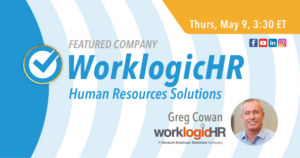Termination, Resignation, and Unemployment Payments

As we began planning for our first ever Virtual HR Education Event here at CEDR, the first thing we did was reach out to our professional community for guidance on what shape that event should take.
The response was incredible! Perhaps the most important thing we learned from the two short surveys we sent out is that there are a lot of people interested in expanding their knowledge of HR compliance, management skills, and employment laws.
That means that there are a lot of good managers out there looking to become even better, which is exactly the type of thing we like to hear!
We also received a handful of specific HR questions in the free-response sections of those surveys, one of which is asked often by our members. It reminded us that everyone could probably use a refresher course on how and why Unemployment Insurance (UI) benefits are awarded to former employees, how that impacts your practice, and, even more specifically, how having the proper policies and documentation in place can help you avoid having to pay UI benefits.
So, without further ado, here is your question of the day:
How Can I Avoid Paying Unemployment After Terminating an Employee?
The short answer is that whether or not an employee is eligible for benefits comes down to a number of factors… This text opens a new tab to a CEDR article on how to avoid paying unemployment after an employee is fired or quits…, some of which are under your control, and some of which are not.
Still, UI is generally an employee friendly process, so you are better off starting the process assuming that if you fire or lay off an employee, they will very likely be eligible for unemployment.
This doesn’t mean you shouldn’t try to dispute an unemployment claim. It just means that you should carefully calculate how much time and energy you want to put into it depending on the facts of the situation.
Now, let’s talk briefly about how unemployment benefits work.
Unemployment is Not an Out-of-Pocket Cost
Employers are not “billed” for payments when a former employee files a successful UI claim for benefits by the state. Rather, when someone is awarded UI, they are paid from what is known as the state “pool” of benefits.
A tiny percentage of each employer payroll in your state is collected as a small fee by your state government. That fee funds the pool that your former employee draws from when they begin collecting benefits.
The size of the percentage of payroll that your office pays into the UI pool is determined by something called your business’ “Experience Rating.” Your Experience Rating is a figure that goes up and down based on the number of successful claims that have been filed against your account in a given timeframe.
When Employees Leave a Job Voluntarily
Unemployment Insurance (UI) exists as an employer-funded state benefit to assist employees who cannot work through no fault of their own…This text opens a new tab to a CEDR article on how to avoid paying unemployment after an employee is fired or quits…. Therefore, employees who voluntarily leave their jobs generally aren’t eligible for benefits.
Since the UI process tends to skew in favor of employees from the start, when an employee leaves your business voluntarily, you’ll want to have documentation on hand to prove that this is the case if you are hoping to ensure they are denied benefits after they leave.
If they don’t provide a written resignation letter, you should still document their decision by providing them a written confirmation that you have accepted their decision to resign.
Get free software that makes documentation easy — unlock your free HR VaultⓇ account from CEDR… This text opens a new tab to the HR Vault….
Please note, expanded unemployment benefits under the CARES Act… This text opens a new tab to a CEDR article on the CARES Act… have temporarily extended benefits to employees who cannot work due to a variety of reasons related to COVID-19. As a result, many employees who would not normally be eligible for UI because they resigned their position are eligible at this time. Fortunately, many states are not increasing employer’s Experience Ratings for UI claims under the CARES Act.
The Exception: Constructive Discharge
There are times when an employee who resigns may still qualify for UI benefits. The state may view the resignation as a “constructive discharge… This text opens a new tab to a CEDR article on constructive discharge and unemployment…” if the employee felt they had no choice but to quit. Common examples include workplace harassment, being paid improperly, or an employer failing to provide legally mandated benefits.
If an employee alleges they were forced to quit, that should trigger you to reach out to a qualified HR professional… This text opens a new tab to the CEDR HR Solutions website… or attorney who has experience with that type of situation for help.
Layoffs and Terminations
Employees are also typically eligible for unemployment if they were separated through a layoff. A true layoff occurs when you no longer have work for an employee, most often because a change in your business finances or structure essentially eliminates the need for the position.
When a layoff occurs, the employee is unemployed through no fault of their own, which will make them eligible for unemployment benefits.
It’s safe to assume that employees will still be eligible for benefits after they are fired, as well. The exception is in states that will deny benefits to employees if their termination was a result of the employee’s “willful misconduct… This text opens a new tab to a CEDR article on willful misconduct…,” which can include behaviors like theft, intentional harm to another person, or some other type of criminal or objectively risky behavior.
In order to show that an employee engaged in willful misconduct, you will want to have documentation on-hand to prove that your employee was knowingly violating your policies, that they had been warned of the need to correct the issue after that violation, and that they continued to violate them without a good reason to do so. Otherwise, you will need to show that an employee’s conduct was so egregious that it warranted firing them on the spot.
For free access to software that makes it easy to store and distribute employee documentation, collect signatures, and make confidential notes, unlock your free HR VaultⓇ account from CEDR.… This text opens a new tab to HR Vault…
Importance of Documentation
Successfully disputing an unemployment claim is highly dependent on your documentation of what happened before, during, and after the separation.
While you can technically communicate policies and corrective action to your employees verbally, without documentation of the conversation, you will have no proof that it actually took place the way you say it did.
We highly recommend you document any conversations you have with your employees that could one day impact your ability or willingness to keep them on the payroll. This includes conversations about leave requests, reasons they give you for refusing work, requests you make of them related to returning to work or responding to you by a certain date, verbal employee resignations, performance corrections, disciplinary actions, etc.
Using CEDR’s free HR Vault software makes it easy to store and share employee documents, collect digital signatures, and make confidential notes in employee files for documentation purposes. Sign up for your free HR Vault account here… This text opens a new tab to the HR Vault… and keep it for the life of your business!
Conclusion
When separating from employees, whether or not that employee will be eligible for UI benefits depends on if the employee was the decision maker with respect to their departure (read: “they resigned or were terminated for willful misconduct ”) or if they found themselves unable to work through no fault of their own (read: “they were terminated for standard performance issues with little to no warning, laid off, or were forced out”).
Whatever the reason for the separation, it is important that you document the separation process and hold onto that documentation for however long your state requires.
For free Exit Interview and Voluntary Resignation Forms, you can use to document a separation, download your free Exit Packet from CEDR HR Solutions… This text opens a new tab to the Exit Packet….
Then, for easy reference and added protection for your practice, store those documents, and share them with your employees using your Free HR Vault… This text opens a new tab to the HR Vault….
Finally, after losing an employee, the next logical step is to begin looking for their replacement. And, you guessed it — we can help with that, too! Click here to Download Your Free Hiring Guide from CEDR HR Solutions!… This text opens a new tab to the hiring guide…





